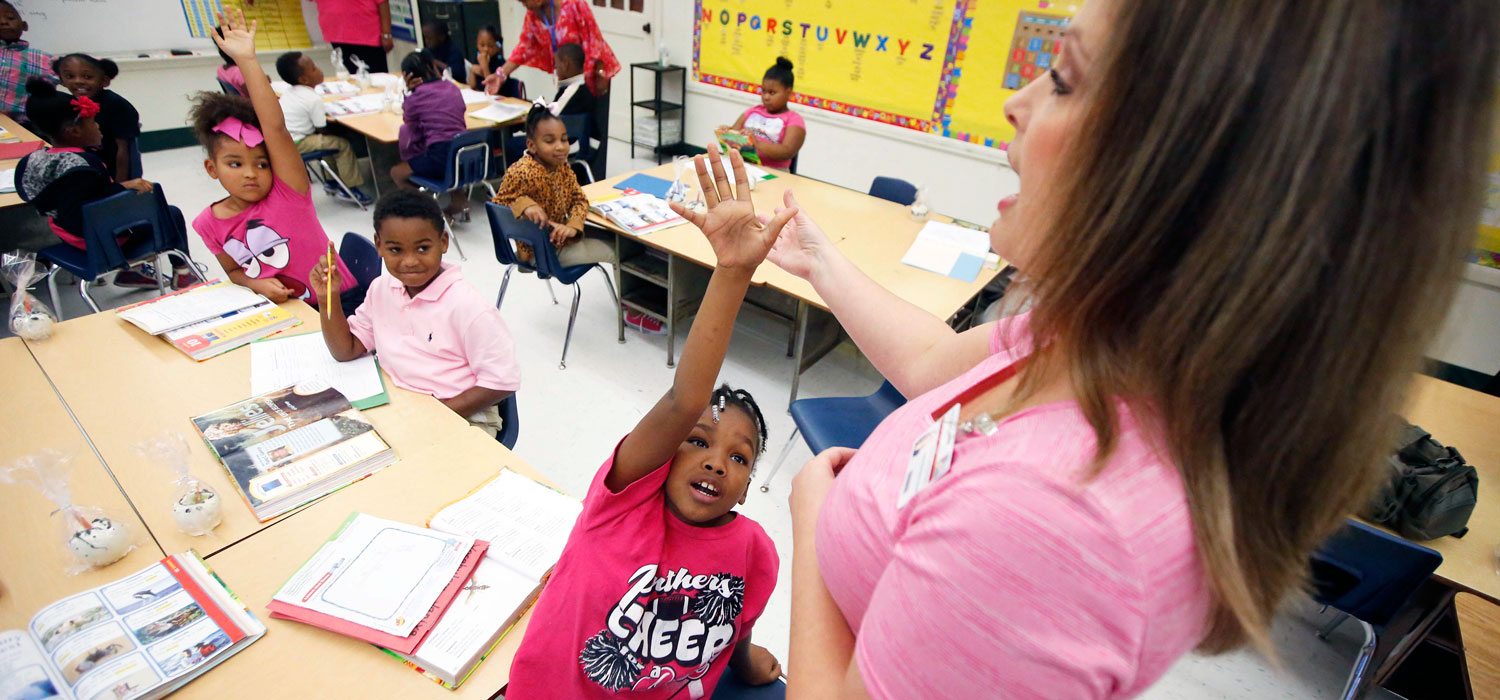
The economic recovery is not helping public schools—in fact, total spending on public schools has fallen since the end of the Great Recession, and it will continue to drop without changes to federal, state, and local policy.
Public schools are run by local school districts and are largely funded at the state and local level. The federal government provides only limited funding—about 8 percent of total spending on K–12 education during the first seven years of the 21st century. But this changed during the Great Recession.
As the economy turned downward in late 2008, local revenues fell with the drop in property values, and state revenues fell with declines in earning and income. At the same time, state spending on Medicaid and other programs increased as more families qualified for free health care and other services because of falling family incomes. States cut spending in other areas, including public schools, to balance their budgets. State and local spending on public education fell by more than $400 per child between 2008 and 2010.
The federal government compensated for most of this shortfall, providing $54 billion for a new State Fiscal Stabilization Fund, about two-thirds of which went to K–12 education. Under the American Recovery and Reinvestment Act (ARRA), Congress temporarily boosted funding for federal education programs, including Title I (for high-poverty schools) and special education. Between 2008 and 2010, federal spending on education increased by more than $370 per child. As a result, total spending on education remained fairly steady at about $8,000 per child in 2008–10. The federal share of K–12 education increased to 11 cents of each education dollar.
What happened when the recession ended? At the federal level, spending on education fell, as the temporary ARRA funding ran out. In addition, federal appropriations for education programs were reduced to meet the spending caps on nondefense spending (required under the Budget Control Act of 2011), and then further cut under the “sequestration” in spring 2013. Federal education spending in 2015 fell to levels below what it had been in prerecession 2008.
State and local spending did not rise to compensate for the loss in federal funding, but remained at the lower levels of the recession. As a result, total spending on education fell in the years following the recession, as shown in the figure below.
As of 2013, the last year for which we have complete data, total education spending per child was lower than prerecession levels. This means less money to hire and retain high-quality teachers, maintain or lower class sizes, and expand access to state-funded early education programs.

On the one hand, there is some good news in the data: the federal government, in addition to its role in supporting special education and Title I spending on high-poverty schools, helped cushion schoolchildren from the negative effects of the recession.
On the other hand, the data show disturbing trends in the wake of the recession. Even as the economy recovers, states continue to cut funding for public schools. This reduces public schools’ ability to play their vital role in offering children an equal opportunity to better themselves and in building the human capital that fuels economic growth.
What’s likely to happen in the future? Partial data for 2016 suggest that state funding cuts for local education are continuing as state revenues remain weak and some states cut taxes, generating further pressure to cut spending. And in the annual Kids’ Share report on public spending on children, federal education spending on children is projected to decline over the next decade, as spending on children is squeezed by the pressures of insufficient revenues and rising spending on health and retirement programs. If current trends continue, we are slated to invest smaller amounts in education, reducing our commitment to public schools.
As my coauthors and I state in our Kids’ Share report, “baseline projections need not become reality.” Each year, federal and state policymakers choose how much to spend on education and other programs relying on annual appropriations, whether to change laws governing entitlement programs, and whether to change the tax code. To date, policymakers at both the federal and state levels have chosen spending cuts in programs such as education over increases in revenues. If we want to maintain the health of our public schools, we will have to make different choices in the future.
Tune in and subscribe today.
The Urban Institute podcast, Evidence in Action, inspires changemakers to lead with evidence and act with equity. Cohosted by Urban President Sarah Rosen Wartell and Executive Vice President Kimberlyn Leary, every episode features in-depth discussions with experts and leaders on topics ranging from how to advance equity, to designing innovative solutions that achieve community impact, to what it means to practice evidence-based leadership.